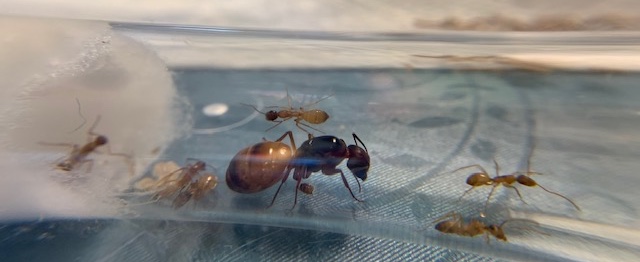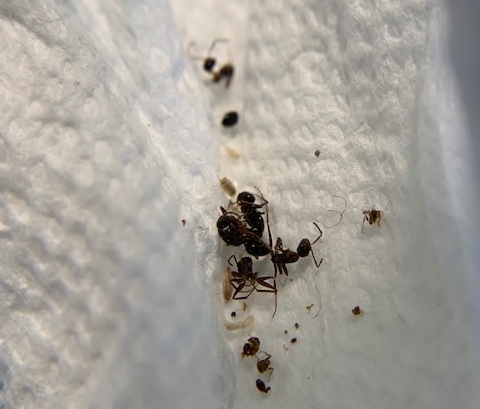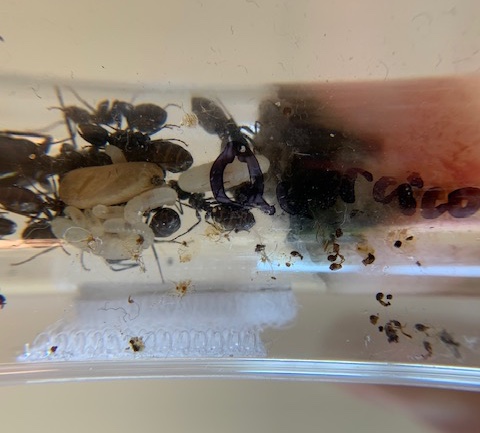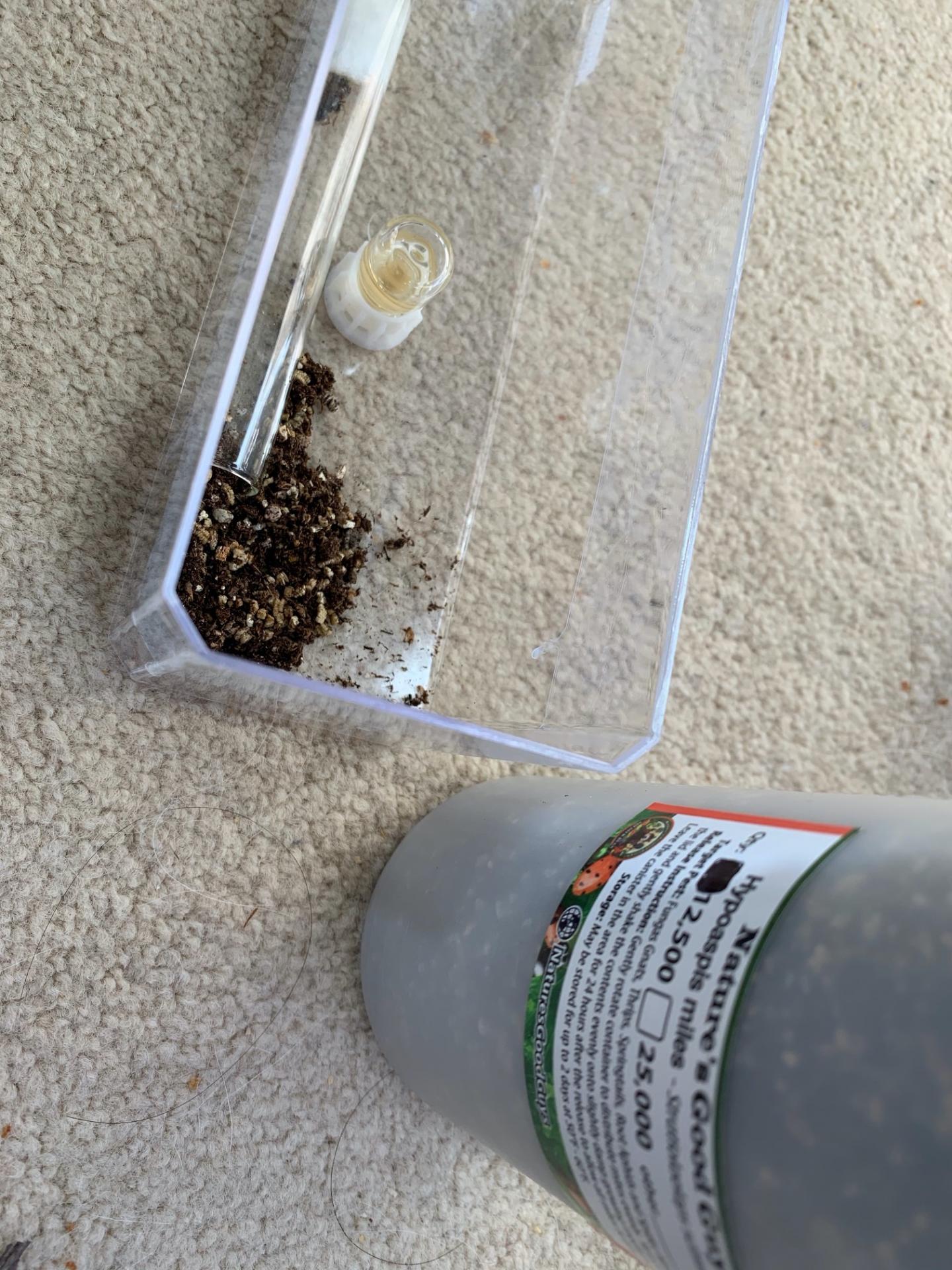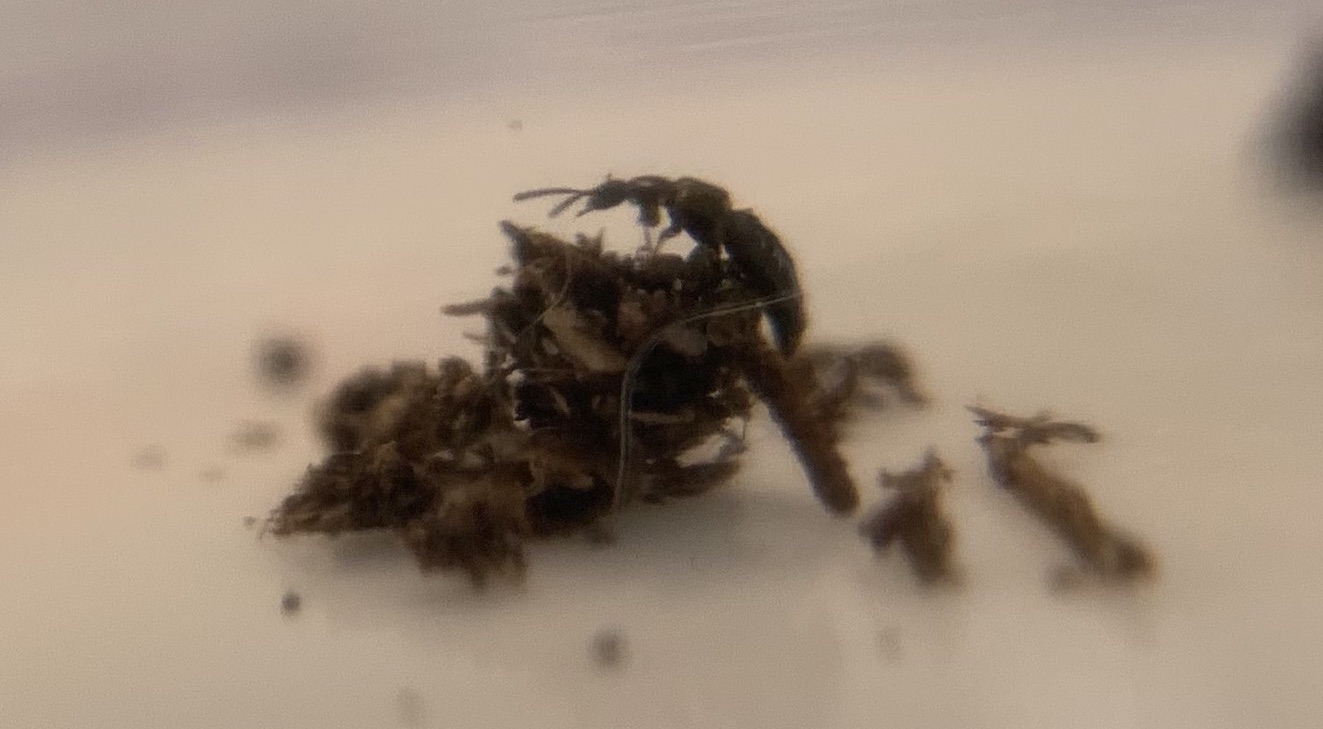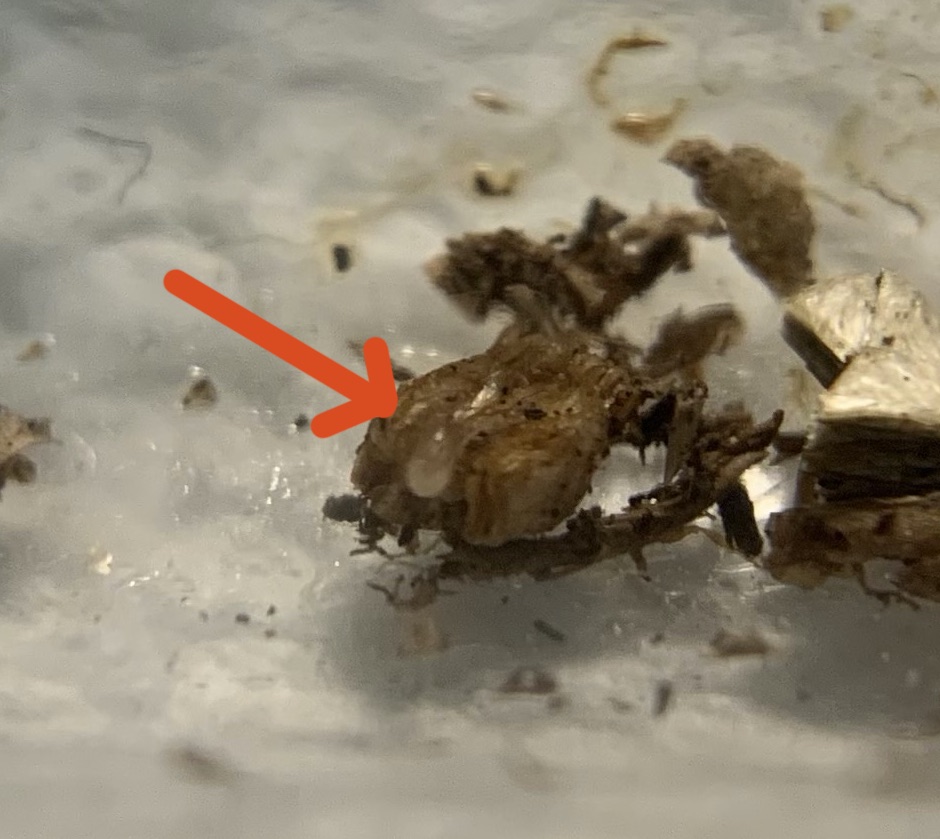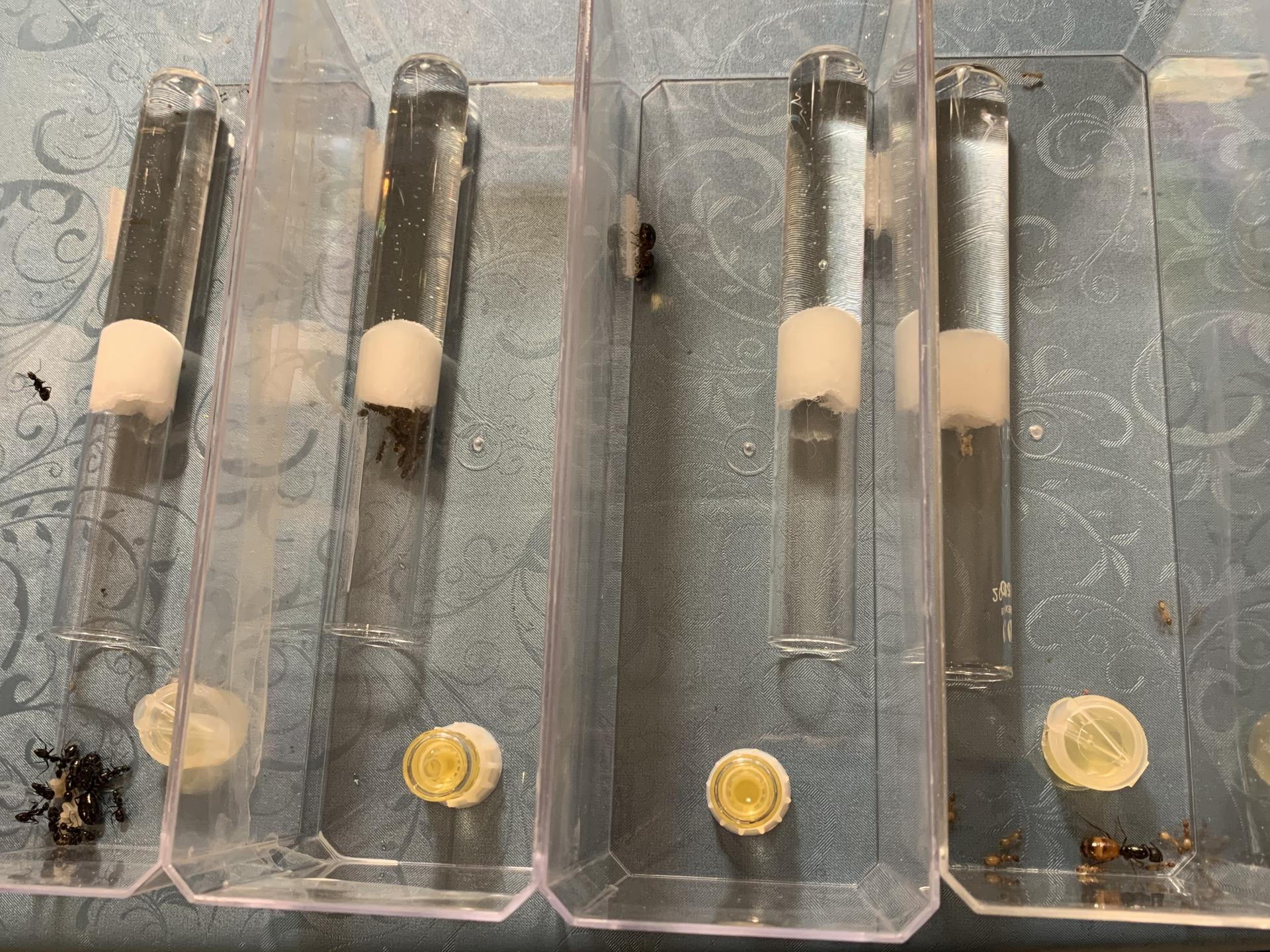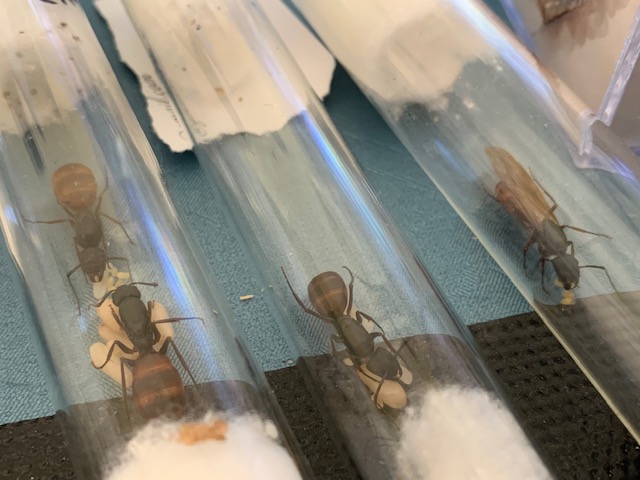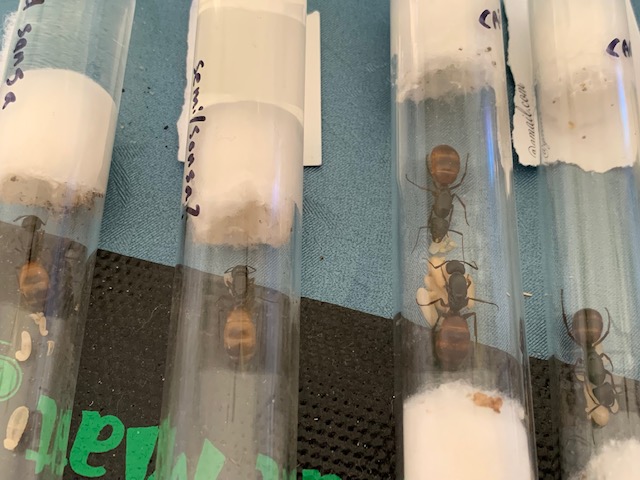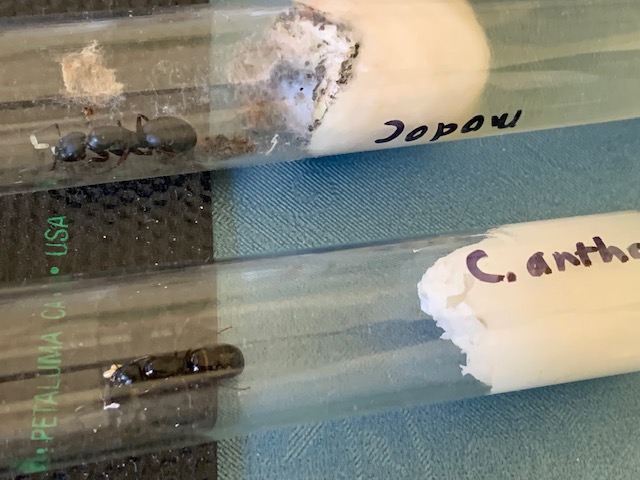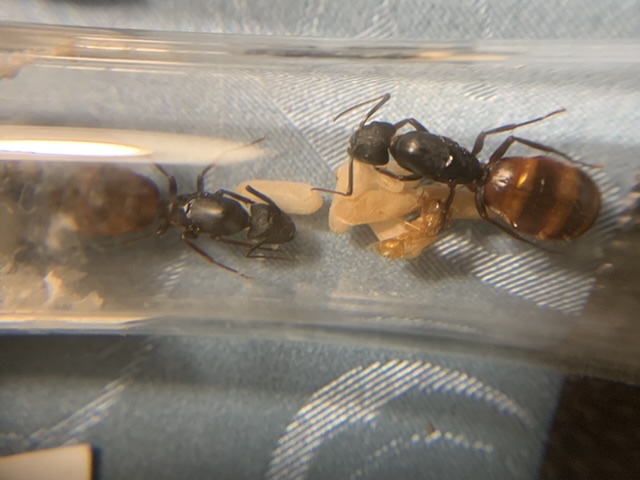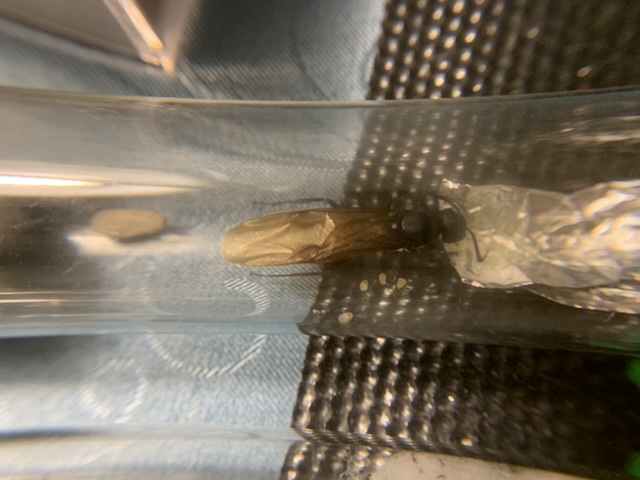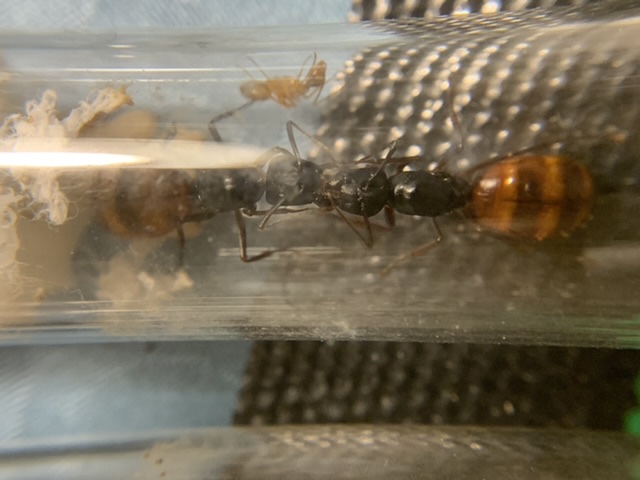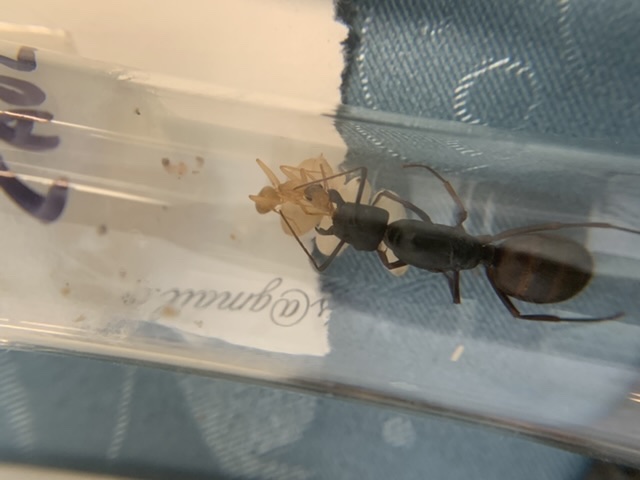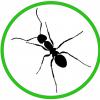2021.5.10
Wow so many Camponotus.
Fertile/proven queens:
* Sooooo the poor Sansabeanus queen is actually still ALIVE. She seems to be remembering how to take of brood by herself. Hopefully the larger larvae will pupate and she'll have workers again. (Recall this is a year 2 Sansa - my first Sansa, the Mean Queen, died. This Sansa is smaller and more nervous and more scaredy-cat than mean.)
* I have the semi/sansa mystery queen next to the Sansa queen. She is down to 1 worker that survived the winter. She also has brood. She looks almost identical to the Sansa, but just a smidge smaller.
* I bought some Camponotus CA02. They look remarkably similar to the Sansabeanus and the Semi/Sansa, just slightly bigger and gasters slightly darker. I have a two queen pleo set and a solo nervous queen, both with pupae. I also acquired two winged dud CA02s. One of them has 1 tiny tiny larva that she is ignoring. I'm not sure they are larger than my cola.
* Speaking of which, C. quercicola is doing fine. She and her massive workers are still unscathed from the multiple Tetramorium invasions, and they are literally sitting on their giant brown cocoons, waiting for them to hatch out. I'm thinking of moving them to a mini-hearth if I see no signs of mites in a couple weeks.
* Happy vicinus queen has survived the most recent Tetramorium attack well, and has a large brood pile and plenty of workers. I'd move them to a mini-hearth but I'm worried about mites.
* Bad luck vicinus queen still has 1 worker (having lost the other to the Tetramorium attack) and a small brood pile. She seems to be perpetually stuck with like 1-2 workers.
* New vicinus. I got sent an extra vicinus queen, with 4 nanitics. Today I dumped them into a mini-hearth previously occupied by Pogonomyrmex.
* C. fragilis are in their own journal, but I really can't see them well so I'm not sure I'll update the journal.
Duds until proven otherwise:
* As mentioned above, I now have 2 winged CA02s. One has a normal sized gaster and one tiny larva that she's ignoring. The other has a small gaster and ... nada.
* Camponotus sp. dud that was in the garage now has an incredibly fat gaster and a small brood pile, plus lost tiny larvae here and there through the test tube. She's still not winning any ant mother of the year awards.
That said, putting her in the garage seems to have helped.
* I was sent a freebie C. anthrax that keeps eating brood. I think she just did it again.
* The freebie C. modoc has like ... 0 - 1 brood. Meaning she might be eating them. I find her dark, metallic, banded, kind of Formica-like gaster to be a really interesting change of pace from all the other Camponotus gasters.
Yeah I've got a ton of Camponotus.
Edited by OhNoNotAgain, May 10 2021 - 3:11 PM.
Formiculture Journals::
Veromessor pergandei, andrei; Novomessor cockerelli
Camponotus fragilis; also separate journal: Camponotus sansabeanus (inactive), vicinus, laevigatus/quercicola
Liometopum occidentale; Prenolepis imparis; Myrmecocystus mexicanus (inactive)
Pogonomyrmex subnitidus and californicus (inactive)
Tetramorium sp.
Termites: Zootermopsis angusticollis
Isopods: A. gestroi, granulatum, kluugi, maculatum, vulgare; C. murina; P. hoffmannseggi, P. haasi, P. ornatus; V. parvus
Spoods: Phidippus sp.
![]() I guess the stress of getting knocked around and losing her one larva (though I do think it was donated) was too much for her.
I guess the stress of getting knocked around and losing her one larva (though I do think it was donated) was too much for her.



